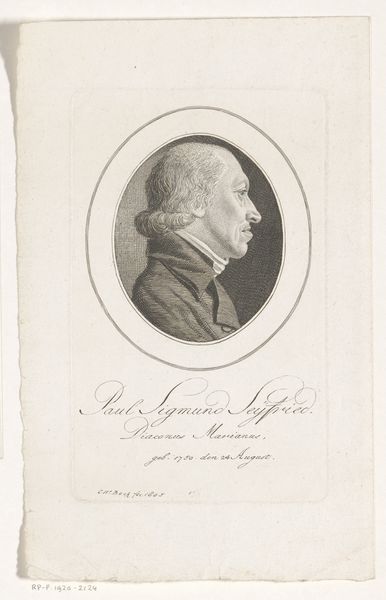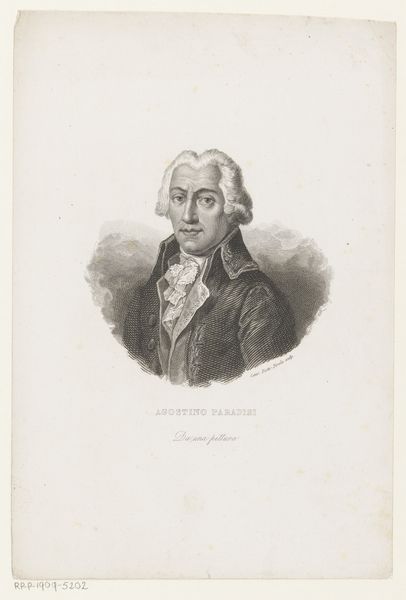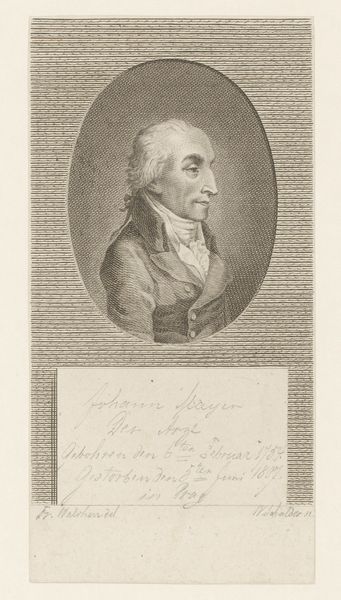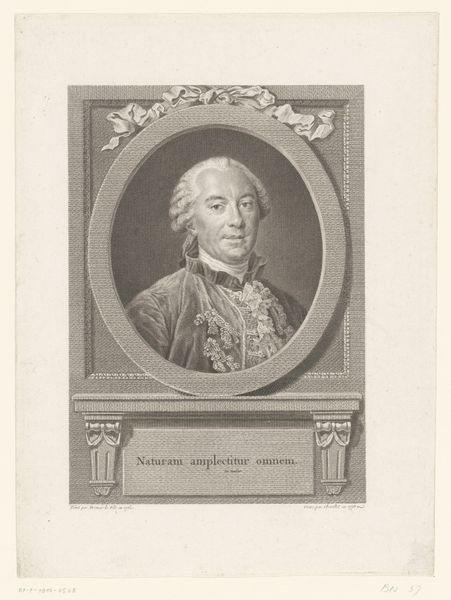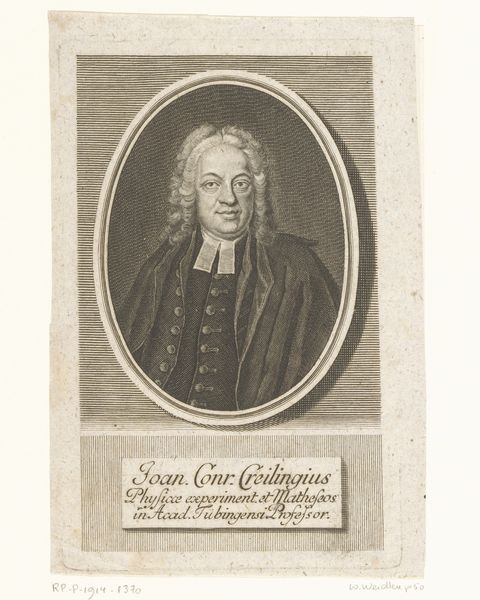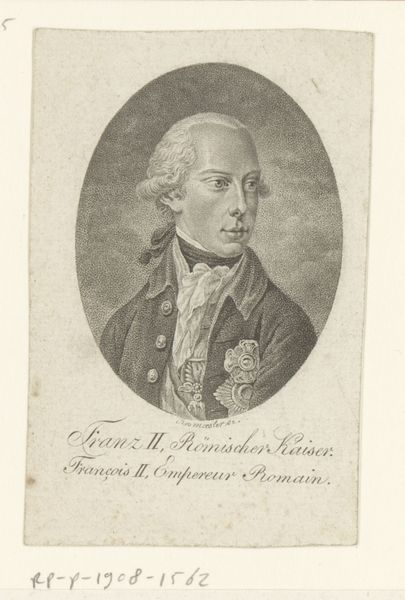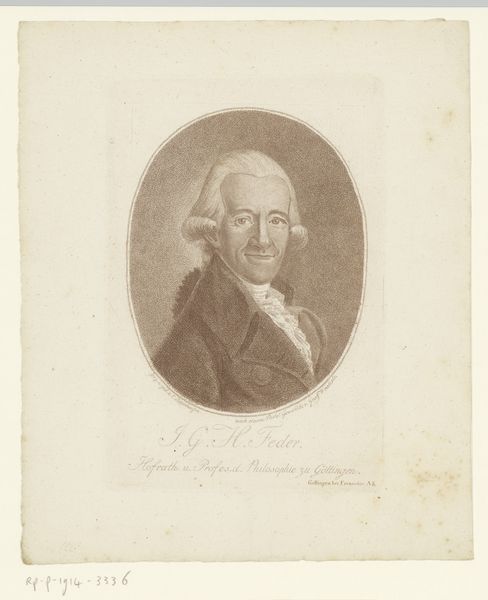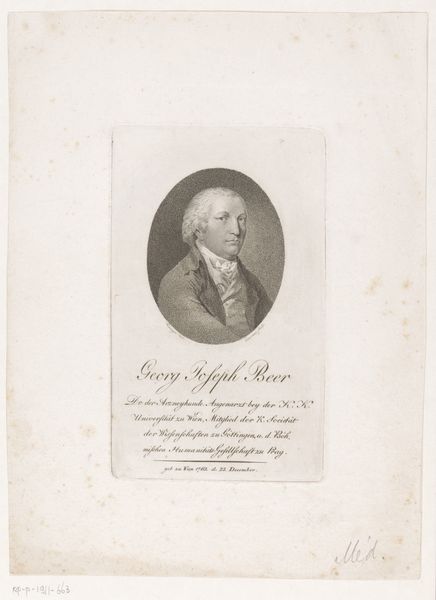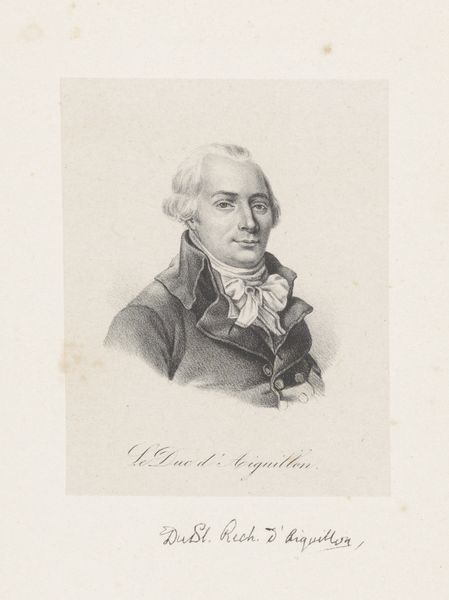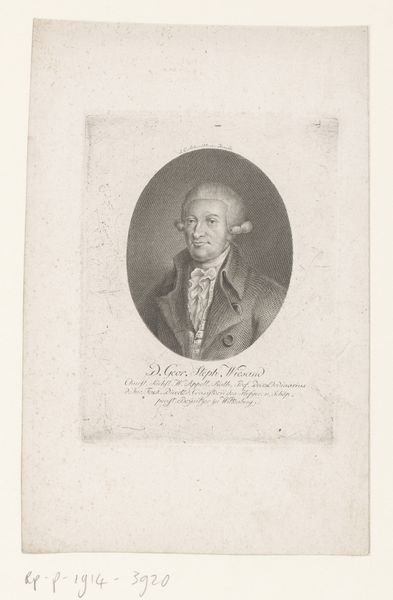
print, engraving
#
portrait
#
neoclacissism
# print
#
portrait drawing
#
engraving
Dimensions: 174 mm (height) x 115 mm (width) (plademaal)
Curator: Let’s take a moment to observe this print, titled "Benjamin Georg Sporon." Gerhard Ludvig Lahde created this engraving in 1807. It currently resides here at the SMK. Editor: There’s an undeniable air of austerity to it. The sharp contrast between light and shadow within that oval frame certainly catches the eye. A severity of tone? Curator: Indeed, Neoclassicism often aimed for that sense of solemn dignity. Engraving, as a process, allowed for controlled lines, mirroring the social decorum. The meticulous technique mirrored the values of reason and order championed by Enlightenment ideals. Editor: So, in effect, this meticulous craft and the controlled lines become metaphors for the sitter's perceived status and social role. I imagine such prints, due to their reproducibility, played a key role in constructing and disseminating these public images. Curator: Exactly. Printmaking, at the time, made such portraiture accessible to a wider audience, moving beyond the exclusive patronage of painted portraits. Editor: This access also speaks to the power dynamics. How these images would've been consumed and what influence they might’ve exerted through such visibility intrigues me. How does portraying someone in a classical style legitimize them or perhaps even idealize them? Curator: A point well taken, how artistic labor and skill were channeled into solidifying the era’s hierarchical values. To create images that projected a very particular set of ideals and in turn influenced and molded society. Editor: Lahde's careful detailing of texture—the ruffles, the jacket’s fabric—are quite remarkable in this small print. It provides almost tactile impression with what one must realize are quite minimalist resources. I now observe also this figure exists almost separated from context in the picture and as a concept. The very literal removal of their being that gives it the impression. Curator: It has truly revealed a compelling intersection of artistry and material history within it. Editor: I agree; reflecting upon the process of this creation highlights larger themes, beyond this portrait's surface presentation.
Comments
No comments
Be the first to comment and join the conversation on the ultimate creative platform.

